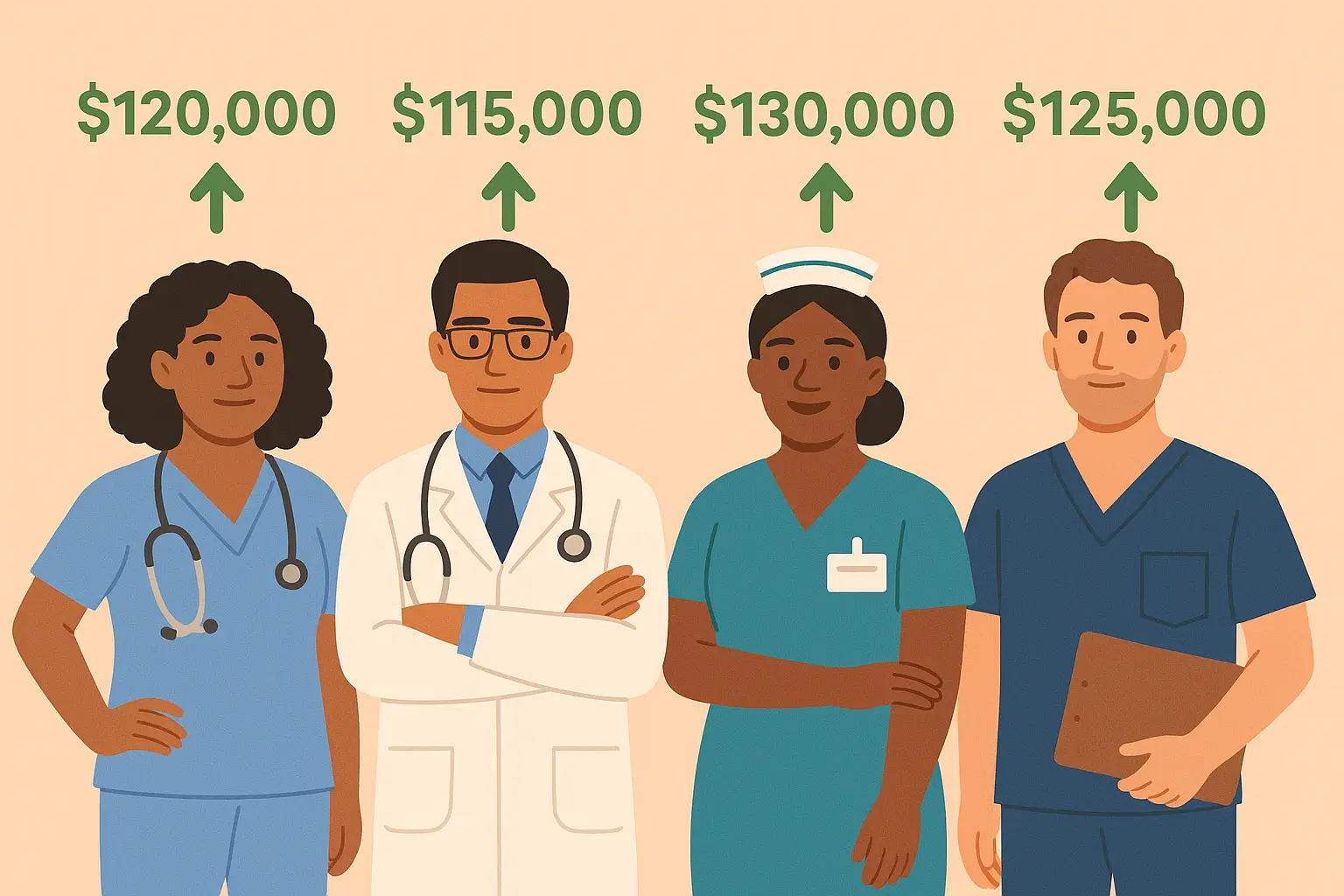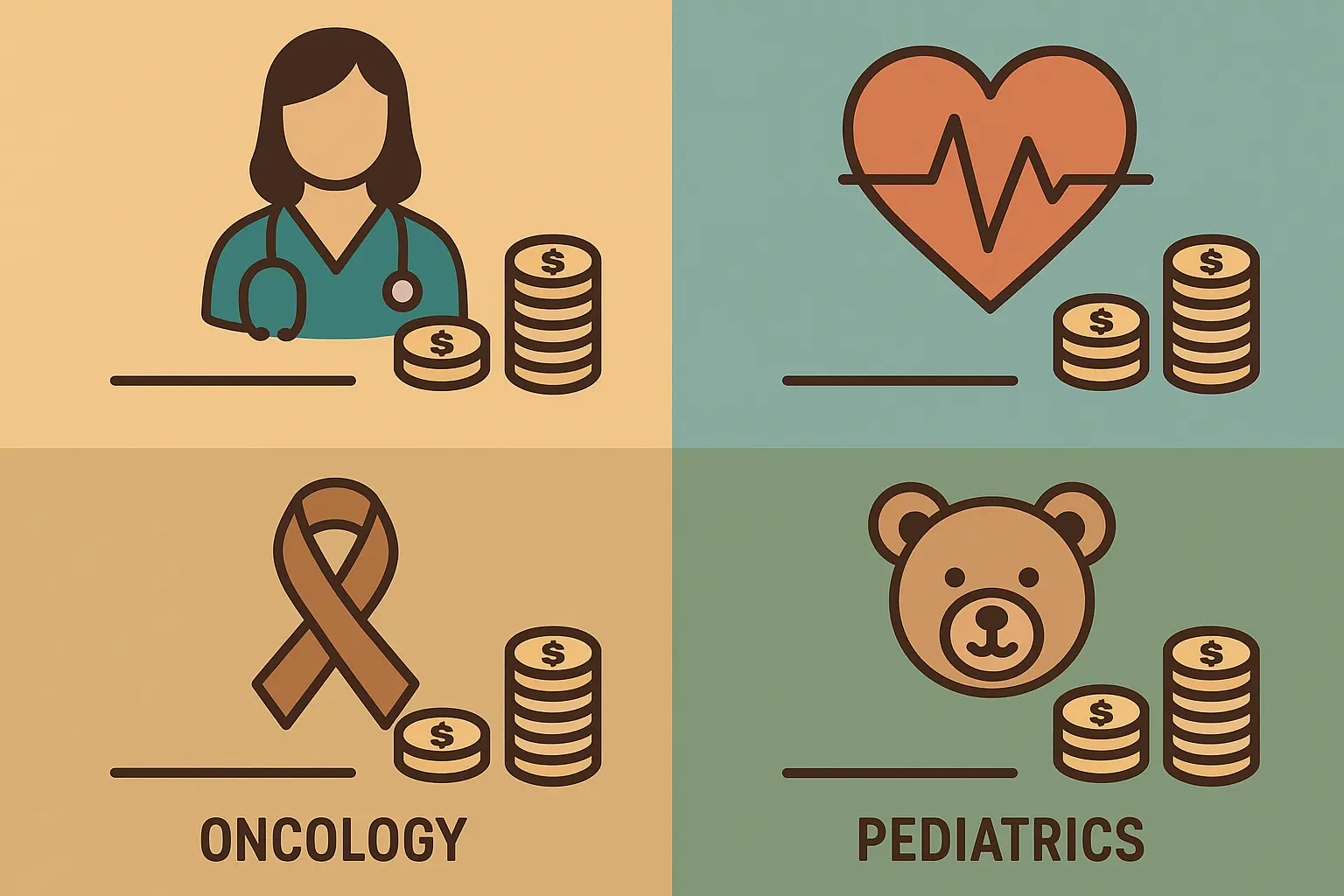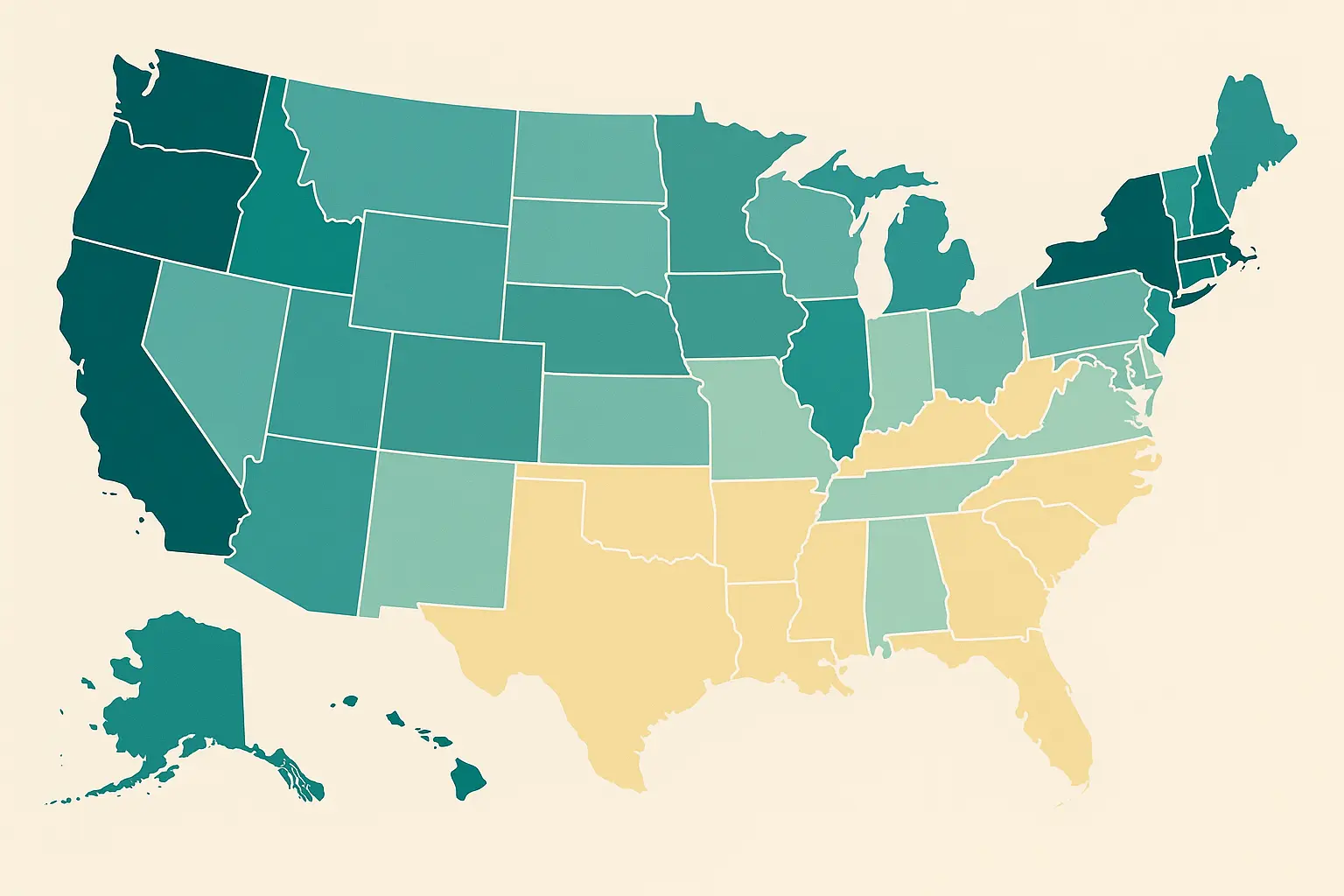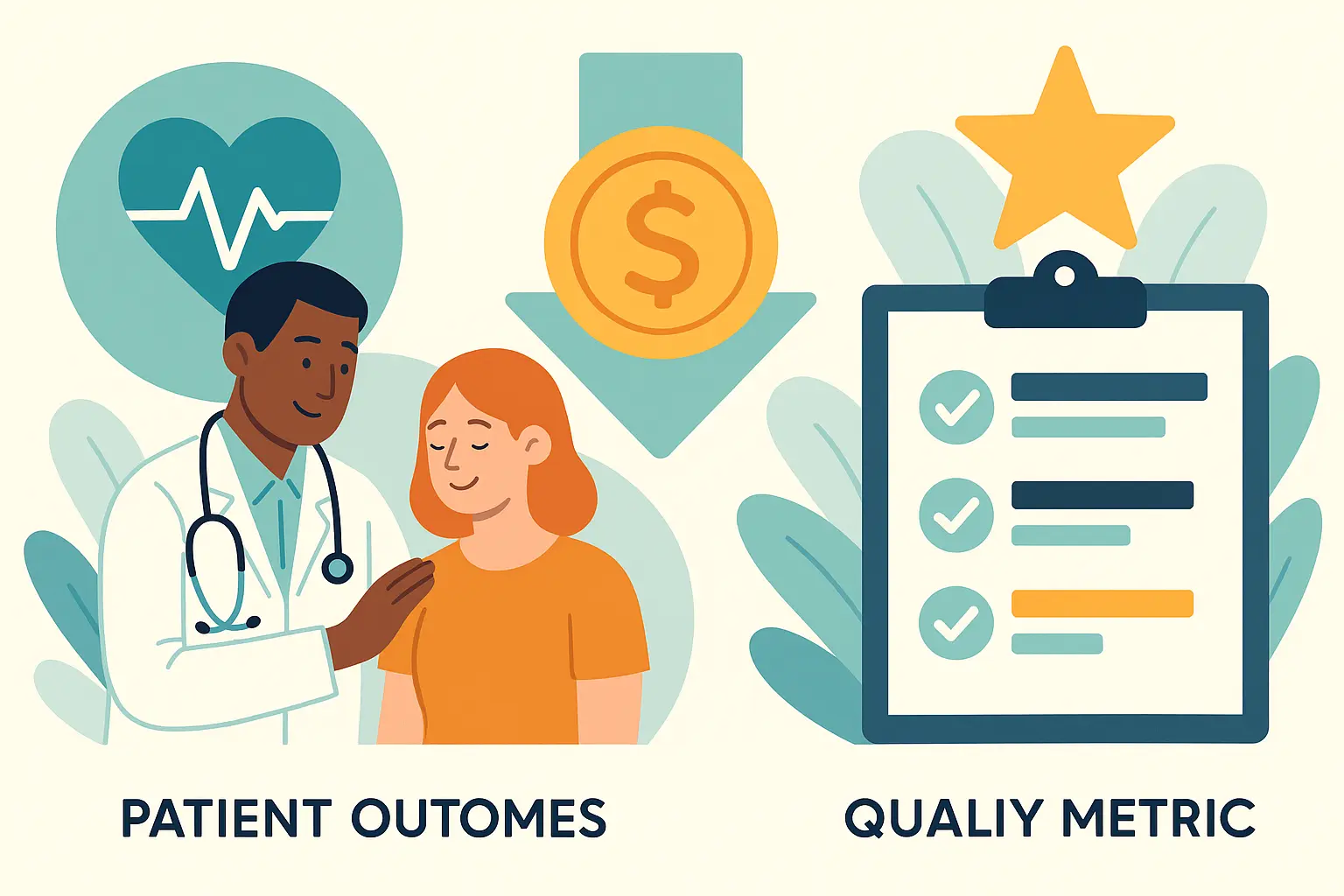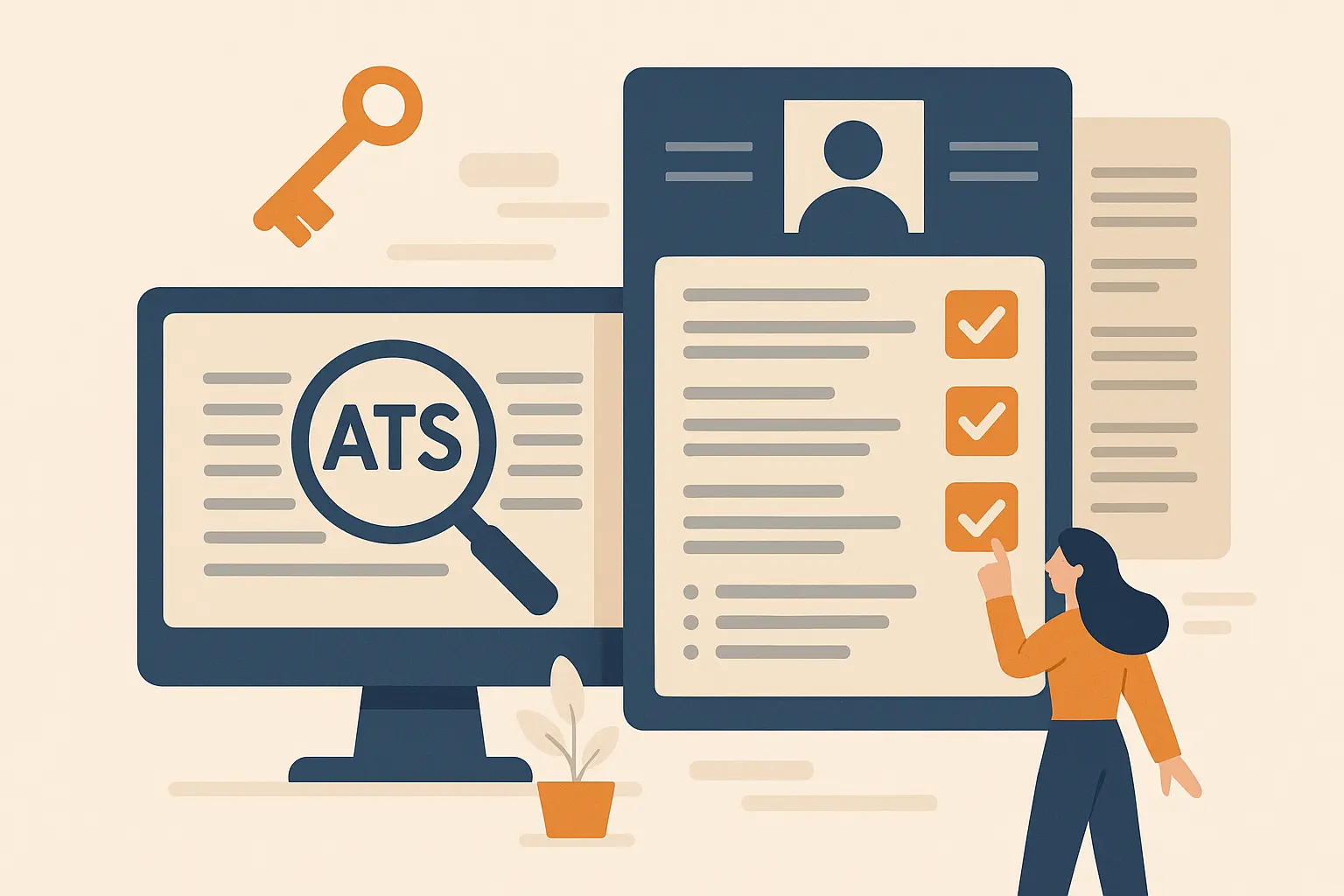NP Salary Secrets: What Every Nurse Practitioner Needs to Know About Making Real Money

Let’s cut through the BS and talk real numbers. If you’re thinking about becoming a nurse practitioner—or you already are one and wondering if you’re getting paid what you’re worth—this guide is for you.
The good news? NP compensation seeing a significant boost in 2023, with average earnings increasing by 14% year over year — rising to $135,000 in 2023 compared to $121,000 in 2022 according to CompHealth’s 2024 APRN Compensation Report. That’s not just cost-of-living adjustments—that’s real demand driving real money.
Table of Contents
-
What You’ll Actually Make (No Sugar-Coating)
-
Where the Real Money Lives
-
Location Reality Check
-
The Money You’re Not Seeing
-
Career Moves That Actually Pay
-
Negotiation Tactics That Work
-
Future-Proofing Your Earning Power
-
How Resume Builder IQ Helps You Land Higher-Paying Positions
-
The Bottom Line
TL;DR
-
NP salaries range from $85K-$150K+ depending on experience, specialty, and location
-
Psychiatric and acute care NPs consistently earn the highest salaries
-
California, Alaska, and Hawaii offer top compensation but factor in cost of living
-
Total compensation packages can add $10K-$30K in value beyond base salary
-
Dual certifications and fellowships can boost earnings by 15-40%
-
The field is projected to grow 52% through 2031, creating salary leverage
-
Telehealth and value-based care are opening new high-paying opportunities
What You’ll Actually Make (No Sugar-Coating)
Starting Out: $85K-$100K your first year
Yeah, it’s a big jump from your RN days. That advanced degree and expanded scope finally pay off.
3-5 Years In: $105K-$125K
This is where you hit your stride. You’re confident with complex cases, and employers notice.
10+ Years: $140K+
The sweet spot. Especially if you’ve specialized or moved into leadership.
Here’s the thing though—these numbers mean nothing without context. A $140K salary in San Francisco barely covers what $90K does in rural Tennessee.
Take Sarah, an FNP who moved from rural Tennessee ($108,180 average) to California ($173,190 average). While her salary increased by $65,000, her housing costs tripled from $1,200 to $3,600 monthly. After taxes and living expenses, her actual take-home purchasing power only increased by about $15,000 annually.
Understanding your earning potential becomes even more critical when you’re strategically planning how to ask for a raise during performance reviews or contract negotiations.
Where the Real Money Lives
The High Rollers
Acute Care NPs are pulling in $120K-$140K annually, and there’s a reason for that. You’re dealing with critically ill patients, making split-second decisions, and often working nights, weekends, and holidays. The hospital environment is intense, but your paycheck reflects that intensity.
Psychiatric Mental Health NPs? They’re sitting pretty at $115K-$145K. Mental health awareness has exploded, and there simply aren’t enough PMHNPs to meet demand. Private practice PMHNPs often earn even more since they can set their own rates.
The demand for psychiatric care continues to surge, with “Specializing as a Psychiatric Mental Health Nurse Practitioner boosts earning potential, with Psych NPs making $19,524 more per year (or $9.42 more per hour) than the average NP nationwide” according to Nightingale College’s recent analysis.
Emergency Department NPs typically see $125K-$150K, plus shift differentials that can add serious money. Fast-paced doesn’t begin to describe ED work, but if you thrive on adrenaline and variety, the compensation makes it worthwhile.
|
NP Specialty |
Average Salary Range |
Work Environment |
Stress Level |
|---|---|---|---|
|
Psychiatric Mental Health |
$115,000-$145,000 |
Outpatient/Private Practice |
Moderate |
|
Acute Care |
$120,000-$140,000 |
Hospital/ICU |
High |
|
Emergency |
$125,000-$150,000 |
Emergency Department |
Very High |
|
Family Practice |
$100,000-$120,000 |
Clinic/Primary Care |
Moderate |
|
Adult-Gerontology |
$95,000-$115,000 |
Clinic/Long-term Care |
Low-Moderate |
The Steady Players
Family NPs represent the backbone of primary care, earning $100K-$120K on average. It’s not the highest-paying specialty, but FNP positions are everywhere, and you’ll have job security for life.
Adult-Gerontology Primary Care APRNs earn $95K-$115K, serving our aging population. With baby boomers hitting their golden years, this specialty has serious growth potential even if current salaries are more modest.
For those exploring different specialties, having a well-crafted resume is essential, and understanding what makes nursing resumes stand out can help you transition between specialties more effectively.
Location Reality Check
States That Pay the Bills
California consistently tops the charts, with averages exceeding $125K. Alaska and Hawaii follow close behind, though you’ll pay premium prices for everything from groceries to housing. Massachusetts and Oregon round out the top five, and all these states have full practice authority—coincidence? I think not.
Texas, Florida, and North Carolina are the states to watch. Healthcare systems are expanding rapidly, competition for APRNs is heating up, and salaries are climbing fast. You might not get California money, but you’ll get a lot more bang for your buck in these emerging markets.
Want the best of both worlds? Tennessee, North Carolina, and Georgia offer attractive salary-to-cost-of-living ratios. You can actually afford a nice house, good schools for your kids, and still have money left over for vacations.
The geographic pay disparity is significant, with APRNs in the Pacific region reporting the highest average salaries at $170,000, while those in the East South Central region earned the least, at $143,000 according to CompHealth’s regional analysis.
Practice Settings That Make a Difference
Large health systems typically offer $105K-$135K with comprehensive benefits packages that add real value. Think retirement matching, excellent health insurance, and clear advancement pathways. You might not get rich quick, but you’ll build wealth steadily in these stable environments.
Private practice can be a goldmine—$120K-$160K+ if you find the right opportunity. The catch? You might need to understand the business side of healthcare, and your salary could fluctuate based on patient volume and practice success.
Urgent care and retail clinics offer something different: flexibility. At $55-$75 per hour, you can often work as much or as little as you want. Perfect if you’re looking for work-life balance or supplemental income.
Consider Marcus, a PMHNP who transitioned from a hospital system ($125,000 salary + benefits) to private practice. His first year brought in $180,000 gross revenue, but after overhead expenses (rent, malpractice, staff, supplies), his net income was $145,000—still a $20,000 increase with complete schedule control.
When transitioning between practice settings, you should consider how different environments impact their compensation calculations, and using a salary to hourly calculator can help compare offers across different employment structures.
The Money You’re Not Seeing
Most NPs focus only on that base salary number, but you’re leaving serious money on the table if that’s all you’re looking at.
Performance Bonuses and Incentives
Many organizations offer quarterly or annual bonuses based on patient volume, quality metrics, or revenue generation. We’re talking $5K-$20K extra per year if you hit your targets. Quality incentives are becoming huge too—patient satisfaction scores and clinical outcomes can directly impact your paycheck.
Signing bonuses aren’t just for new grads anymore. Experienced NPs in high-demand specialties are seeing $5K-$15K signing bonuses, though you’ll usually commit to staying 2-3 years.
The Long-Term Money Moves
Loan forgiveness programs can wipe out $20K-$50K in educational debt if you work in underserved areas. Federal and state programs are expanding, making this a real option for debt-heavy new grads.
Continuing education support might seem small at $2K-$5K annually, but it adds up. Plus, staying current with certifications and attending conferences can lead to promotions and specialty opportunities that boost your salary significantly.
Leadership and Beyond
Nurse Manager positions let you earn $130K-$160K while keeping one foot in clinical care. Director-level roles can hit $150K-$200K+, though you’ll need business and leadership skills beyond your clinical expertise.
Independent practice in full-practice-authority states? Sky’s the limit. Your earning potential depends entirely on your business acumen and market demand. Some independent NPs are pulling in $200K+ annually, far exceeding traditional salary expectations.
|
Compensation Component |
Annual Value |
Requirements |
Time Commitment |
|---|---|---|---|
|
Performance Bonuses |
$5,000-$20,000 |
Meet quality/volume targets |
Ongoing |
|
Signing Bonuses |
$5,000-$15,000 |
2-3 year commitment |
One-time |
|
Loan Forgiveness |
$20,000-$50,000 |
Underserved area work |
2-5 years |
|
CME Allowance |
$2,000-$5,000 |
Maintain certifications |
Annual |
|
Leadership Premium |
$20,000-$50,000 |
Management responsibilities |
Full-time |
Understanding the full scope of your compensation package is crucial, and you should utilize a salary increase calculator to evaluate the true value of bonuses and benefits when comparing job offers.
Career Moves That Actually Pay
Certifications That Count
Dual certification is where smart NPs make their money. Hold both FNP and PMHNP certifications? You’re looking at salary premiums of 15-25% above single-specialty practitioners. Healthcare systems love versatility, and you’ll have serious negotiation leverage with multiple credentials.
Fellowship training in cardiology, oncology, or dermatology can boost your earning potential by $20K-$40K annually. Some specialized fellowship-trained NPs are hitting $180K+ in competitive markets, significantly exceeding typical salary ranges.
Academic Side Hustles
Part-time clinical faculty positions at nursing schools can add $25K-$50K annually to your income while you maintain your clinical practice. You’re diversifying your revenue streams and building your professional network as an educator.
Precepting new graduates might seem like extra work, but many healthcare systems offer $2K-$5K stipends per student. It’s good money for sharing your knowledge and giving back to the profession while mentoring the next generation.
Certification Advancement Checklist
-
Research dual certification requirements in your state
-
Identify fellowship programs aligned with your interests
-
Network with current fellowship-trained NPs
-
Calculate ROI on additional education investments
-
Apply for education funding or employer sponsorship
-
Plan timeline for certification completion
-
Update resume to highlight new qualifications
-
Negotiate salary increase upon certification completion
When pursuing advanced certifications, you should ensure their credentials are properly showcased, and understanding ATS-friendly resume formatting becomes crucial for landing those premium positions.
Negotiation Tactics That Work
Do Your Homework First
Successful negotiations start with solid market research. Use AANP salary surveys, Glassdoor, and regional healthcare compensation reports to know exactly what you should be earning. Walk into that conversation with specific numbers for your geographic area, specialty, and experience level.
Don’t just focus on base salary. Health insurance, retirement contributions, CME allowances, malpractice coverage, and flexible scheduling can add $10K-$30K in value to your total package.
Timing Is Everything
The sweet spot for negotiation? After you receive a formal offer but before you accept it. That’s when the employer has invested the most in your candidacy and is most motivated to close the deal.
Use Market Forces to Your Advantage
In shortage areas, you hold the cards. Rural markets and underserved areas often provide the strongest negotiating positions because they need you more than you need them, creating upward pressure on salary offers.
Multiple job offers create serious leverage, but handle them professionally. You want higher compensation, not burned bridges in your local healthcare community.
Jennifer, an experienced ACNP, received two offers: Hospital A at $135,000 and Hospital B at $128,000 plus $10,000 signing bonus. She used Hospital A’s offer to negotiate with Hospital B, ultimately securing $140,000 base salary plus the signing bonus—a $17,000 total increase from the original offers.
Salary Negotiation Preparation Checklist
-
Research regional salary data for your specialty
-
Calculate total compensation value of benefits packages
-
Document your unique qualifications and achievements
-
Practice negotiation conversations with trusted colleagues
-
Prepare to discuss your value proposition clearly
-
Set your minimum acceptable offer beforehand
-
Plan your response to common objections
-
Have alternative requests ready if salary is non-negotiable
Future-Proofing Your Earning Power
The Numbers Look Good
The Bureau of Labor Statistics projects 52% growth in employment through 2031. That’s way faster than average occupations, and it means continued upward pressure on salaries.
Baby boomers are retiring and need more healthcare services. Medicaid expansion is creating new patient populations. Primary care physician shortages are getting worse. All of this adds up to more demand and better compensation across all specialties.
The profession’s recognition continues to grow, with “US News reports that NPs have a tiny unemployment rate of 0.6%, pointing to excellent job security and future prospects” and ranking as the #2 best job overall in recent rankings.
Technology Creates Opportunities
Telehealth platforms are letting NPs serve patients across state lines (where legally permitted), creating national job markets. When employers in different states are competing for your services, salary offers increase significantly.
Hybrid practice models combining in-person and virtual care let you maximize patient volume and productivity. More patients often means performance bonuses and higher overall compensation for those adapting to these new delivery methods.
Value-Based Care Rewards Results
Healthcare is shifting toward value-based payment models, and NPs who can demonstrate superior patient outcomes and cost-effectiveness are commanding premium salaries. If you can show you keep patients healthier while spending less money, you become incredibly valuable.
Population health management skills are gold. APRNs who excel at chronic disease management and preventive care are exactly what healthcare systems need to reduce costs while improving outcomes, positioning them for enhanced compensation packages.
How Resume Builder IQ Helps You Land Higher-Paying Positions
Breaking into those higher-paying positions often comes down to one thing: getting your resume past the applicant tracking systems that filter out qualified candidates before human eyes ever see them.
Healthcare organizations use sophisticated ATS software that screens for specific keywords, formatting, and industry terminology. Your extensive clinical experience, specialized certifications, and advanced training mean nothing if the system can’t parse your resume properly.
Resume Builder IQ’s AI-powered platform solves this problem with ATS-friendly templates designed specifically for healthcare professionals. The system understands how to present complex clinical competencies in language that both machines and hiring managers recognize when evaluating candidates.
Whether you’re targeting high-paying specialty roles, transitioning between practice settings, or pursuing leadership positions, the platform’s industry-specific bullet points help you articulate your value proposition effectively. You can customize your resume for different opportunities—hospital systems, private practices, urgent care centers—ensuring you highlight the most relevant qualifications for each role.
For those exploring premium $140K+ positions or making the jump to management roles, Resume Builder IQ helps bridge experience gaps and showcase transferable skills that justify higher compensation packages.
Ready to land that higher-paying position? Try Resume Builder IQ’s AI-powered resume builder and start getting interviews at the healthcare organizations that pay what you’re worth.
Understanding proper professional resume formatting is crucial for competing for premium positions in today’s competitive healthcare market.
The Bottom Line
The salary landscape offers real opportunities for financial growth, but success requires strategic thinking beyond just showing up and doing good work. Your specialty choice, geographic location, and career development decisions will have more impact on your lifetime earnings than almost any other factors.
The data shows this field is exploding with opportunity. 52% job growth through 2031 means you’ll have leverage in salary negotiations for years to come. Healthcare systems need you more than you need any single employer, and that dynamic creates upward pressure on compensation across all practice settings.
Don’t leave money on the table by accepting the first offer or staying in a role that undervalues your skills. Research your market, understand your worth, and negotiate accordingly. The difference between a passive approach and strategic career management can easily mean $200,000+ in additional lifetime earnings.
Most importantly, remember that your salary is just the beginning. Leadership roles, entrepreneurial opportunities, and emerging healthcare technologies are creating new pathways to six-figure incomes that didn’t exist even five years ago. Position yourself strategically, and you’ll be ready to capitalize on whatever opportunities come next.

